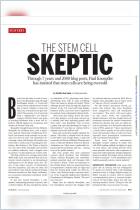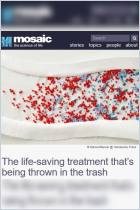Melden Sie sich bei getAbstract an, um die Zusammenfassung zu erhalten.

Melden Sie sich bei getAbstract an, um die Zusammenfassung zu erhalten.
Linda Marsa
The Neurofix
Aeon, 2015
Was ist drin?
Stem cell therapy appears to be the fountain of youth, able to restore aging brains to their former glory.
Recommendation
From age 20, human brains begin slowly shrinking, eventually leading to loss of cognitive and physical function in old age. Neural stem cell technology could heal and reverse the damage, returning quality of life to a vast, aging population. In her bittersweet essay, science writer Linda Marsa explains just how close neural stem cell research is to reversing many of the diseases of old age. Marsa explains how scientists have overcome ethical issues and immune system rejection, and cites successful studies to show the promise this research holds. getAbstract recommends her observations to anyone looking for some good news about the future of aging.
Summary
About the Author
Linda Marsa is a contributing editor for Discover magazine. She wrote Fevered: Why a Hotter Planet Will Hurt Our Health.




















Comment on this summary